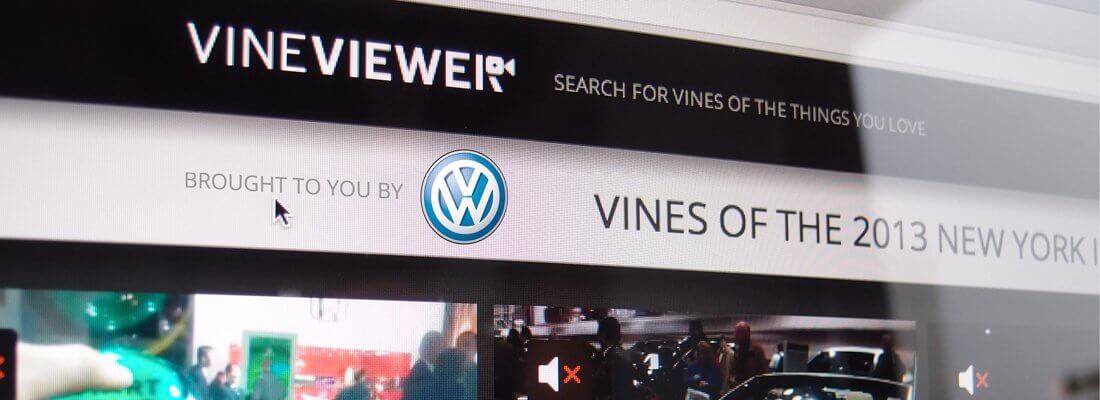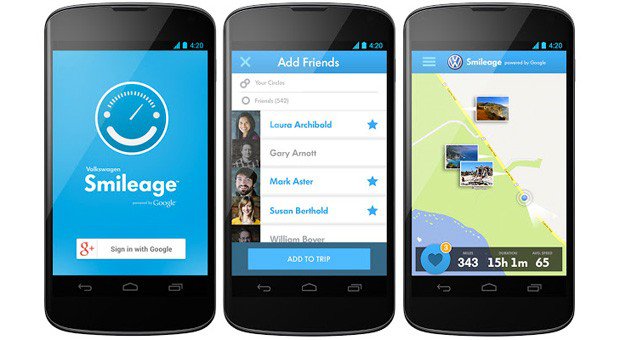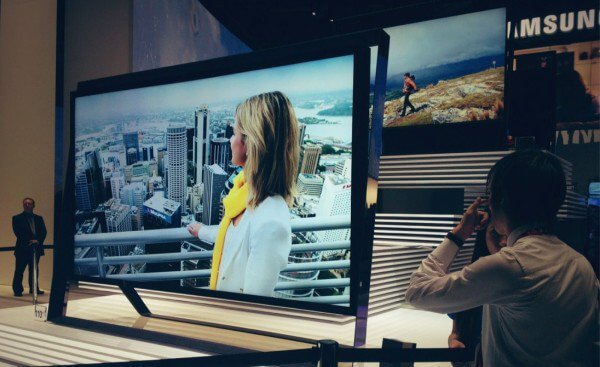May02News
We’re excited to announce SS+K was named a Webby’s People’s Voice winner in best copywriting for our Obama for America For All campaign. Kudos to the SS+K teams that helped make the campaign a reality, from the creative thinkers who first hatched the idea and the producers who brought it to life to the account teams that managed the process. We also owe a tremendous thank you to our external teams – including the folks at Chelsea Pictures – whose efforts helped inspire voters and move people.
We also must thank the Webby voters who clicked endlessly for the win. Congratulations to all of the Webby winners; we can’t wait to deliver our 5-word acceptance speech in May.
We’re excited to announce we’ve been named a finalist in four categories at this year’s Webbys. Our election year “Your First Time” digital ad for the Obama for America campaign starring Lena Dunham snagged a finalist spot in the online film & video best individual performance category. The Obama for America For All youth and social engagement campaign was singled out in two categories: best copywriting and best social media campaign in interactive advertising & media. Our AFL-CIO Work Connects Us All site was selected as a finalist in best of the web. We can’t wait to see the results.
We also have the chance to win the People’s Voice award in our categories for each of our submissions, so sign up + vote:
- vote for Lena here,
- vote for “For All” here and here
- vote for AFL here!
- Check out our other honorees here.
Last week we rolled out a brand new version of our VineViewer project with custom content features and a slick new design. And we partnered with our friends at VW to bring the experience of the New York International Auto Show to automotive enthusiasts around the web, as told through vine videos. Check it out.
The Vine community is flourishing, and its power as a storytelling + marketing tool continues to grow. We’re really excited about the possibilities (so is AdWeek, who recently featured our NYIAS VineViewer). We can’t wait to see what’s vine’d next.
Top
SS+K’s delegation to SXSW 2013 is safely back in NYC full of ideas, inspiration and tacos. From interplanetary travel to a coat made of wood to Grumpy Cat, here are the top things that we’re still talking about:
1. Go big and phone home: We’re an industry preoccupied with firsts, but sometimes we let practicalities get in the way of our big, audacious goals. Keynote speaker Elon Musk is transforming three industries through his companies – space exploration (SpaceX), automotive (Tesla), and energy (SolarCity) – and he sees his mission as helping to make humanity an interplanetary species before Earth becomes uninhabitable [in about 500 million years or so]. If that’s not a big audacious goal, we don’t know what is. So the next time we let practicalities limit us, we’re going to think of Elon and go bigger.
More
2. #artcopycode: It has been about a half century since Bill Bernbach first thought to put copywriters + art directors together. Google thinks it’s high time we make technology just as central to the creative process – they call that model #artcopycode. Their first experiments with the model were a talking sneaker and an innovative “Smileage” app for Volkswagen.
3. Tune in: It wouldn’t be SXSW if we didn’t discover a few local Austin bands to blast during late nights at the office. Emily Bell got us boot-scooting and Black Pistol Fire and Quiet Company inspired some rocking out over BBQ. We also met Rico Gagliano, who turned us onto his Dinner Party Download podcast – we recommend you check it out.
4. The signal + the noise: Nate Silver got to give a keynote, but we were more interested in smaller panels about how developers are using “big data” to separate the signal from the noise to create better user experiences. Wouldn’t it be great if you could say to Siri “book my flight to Austin” and it knew just what flight you meant, and what seat you wanted, and which credit card to use? The information is out there in your inbox, texts, credit card data, etc. – the trick is finding the right information and applying it the right way. Xobni CEO Jeff Bonforte thinks “robot apps” that can do this and more are in our near future.
5. Speaking of big data: We heard how Code for America (aka, Peace Corps for Geeks) is using metrics and relatively simple technology to help cities work better, and at the same time, give their citizens more power. The secret isn’t in the code, but in the culture that allows for change.
6. Speaking of big data, cont’d: Dennis Crowley, founder of Foursquare, has A LOT of data. Through data visualization, he showed just one example – a time lapse of Foursquare activity in New York City during Hurricane Sandy.
7. Watch out for splinters: MakerBot CEO Bre Pettis wore an unusual coat to his SXSW Keynote. Turns out it was made of wood – and prototyped using a MakerBot 3D printer. We’re thinking we’ll see more unusual materials and design methods on the catwalk as 3D printing takes off.
8. Vine bears fruit: As you would expect, every moment at SXSW was documented by every mobile app imaginable. For the first time, that mix included newcomer Vine, a Twitter-owned service that lets users take and share 6-second videos. To tap into the excitement, SS+K created South by 6 Seconds, or SX6s, a website that aggregates Vines around SXSW and allows users to easily search + explore them – and it struck a chord with coverage on sites like Creativity and PSFK. We also used all of those Vines to create a highlight reel of the whole festival – it’s the next best thing to being there.
Those were just a few of the highlights of a jam-packed four days. And we’re already looking forward to doing it again next year.
Less
SS+K partner Lenny Stern was quoted in last week’s Adweek on Nissan’s revival of the Datsun brand.
Brand comebacks are opportunistic because macro-economic changes have forced people to reorder their priorities and rethink brand preferences, said Lenny Stern of brand consultancy SS+K in New York. That means consumers are open to reconsidering old brands. Also, there’s the retro-chic trend: “It’s cool to be connected to the past, but with a new twist on it,” explained Stern.
Read more here.
TopSS+K introduces SX6s, a new way to watch, engage and participate with SXSW 2013. A collaboration with developers Firefall Pro, Sx6S allows users to watch SXSW as it happens across Twitter’s Vine app. SX6s has been featured across advertising, creative and technology media, including PSFK, AgencySpy and Creativity. During SXSW Interactive, SS+K compiled a best-of from SX6s for the best 6-second snippets of the festival. Check it out below.
More
SX6s in the media:
AdRants: Why SXSW is still awesome
“SS+K wanted to capture the SXSW experience by tapping into the videos people were sharing from the festival through Vine. The agency used the SX6s app they built to view and select a set of Vines they thought were an accurate representation of SXSW experiences people were documenting in their vines: parties, food, street life, robots, and the Music, Film, and Interactive conference itself…The result is a frenetic video that captures what it’s like to attend SXSW. The pace is fast and furious. The schedule is tight. And it’s a panoply of information and insight to fuel the mind for months following the event.”
PSFK: Hot Picks for SXSW
Vine is definitely one of the most fun and popular new apps in a while, and its widespread use at SXSW is proof of that. This site pulls together hundreds of the little 6-second videos into one place, so you’ll always know what’s happening everywhere in Austin. It’s really fun to see the range of activities people are engaged in – everything from hushed panel audiences to wild concerts and puppets being interviewed.
AgencySpy: SS+K Creates ‘SX6S’ Highlight Reel
In cased you missed the unveiling of SS+K’s Vine SXSWi search tool dubbed “SX6S,” the agency has rolled out the highlight reel above to give you a feel of the goings-on in Austin this past week. Thankfully, our sort-of ADD makes clips like this quite palatable. Here’s some context from SS+K head of production, John Swartz: “We brought these vines together and edited as you might any montage, or even a music video. But as we did, we realized that the range of vines gave us incredible flexibility in telling the story of the festival. And rather than just play back the videos in sequence, we thought presenting them in a more visually engaging, even frenetic way, gave a better sense of the mania of the festival. We thought each video was special in its own way, depicting something fun, funny, ugly, embarrassing, interesting, etc. We each had a favorite, and no one vine stood out as the best. Although I’m partial to the monkey.”
Creativity: SS+K launches updated Vineviewer tool [a Creativity Pick of the Day]
“Because every social utility at SXSW has to be more complicated than the last, SS+K launch a follow-up to their pretty cool “Vineviewer” tool, which let you search for Vines based on hashtags and keywords. SX6S aggregates #sxsw-tagged vines from Twitter, then lets those in Austin check out what everyone else in Austin was up to by searching for things — like #breakfasttacos, for example. If you’re not in Austin, you can look to, but why would you want to know of all the fun you’re missing out on?”
SS+K’s Sx6S teaser video:
Less
VineViewer is a fun utility developed (rapidly) by SS+K and Firefall Pro designed to allow people to search the growing library of vines based on their tags. We were really excited by the launch of Vine. Like everyone else in our business, we immediately began thinking of different ways we might bring vines in on our client work. In doing so, we lamented that there was no simple way to search for vines of a specific topic, like love for Valentine’s Day. Now you can.
VineViewer has been featured in Fast Company, Creativity Magazine and on AgencySpy, Business Insider and in Creativity’s AdCritic Top 20.
TopThis article was originally published on the Huffington Post.
As the inauguration approaches and Washington gears up for battle, Americans tired of seeing our government held hostage by rigid ideologues, take heart. Help could be on the way in the form of young voters who flexed their political muscle in November.
More
Remember the predictions that young voters had had their fill of Barack Obama and wouldn’t show up in the voting booth? Whoops. One point twenty five million more of them voted for the president in 2012 than in 2008. If Progressives build on what drove them back to the polls, then they have a chance to secure an enduring majority.
That, of course, is a big “if.” The challenge is remaining faithful to the surprising complexities of young Americans’ views.
Our research shows that young people have a complex but coherent set of values that sets them apart from previous generations. They value open-mindedness and inclusivity, and abhor injustice. They embrace different races, sexual orientations and views. They are individualists who want to put their own innovative mark on the world. However, their individualism is wrapped in the collective. They collaborate in their personal lives and support it in politics. The Progressive bedrock value of communitarianism is in their DNA — to them, we are better and stronger together.
Yet, they are not wooly-headed dreamers, but pragmatic idealists. They came of age during the 2000s — the decade of 9/11, two wars and the Great Recession. They are ready to work hard, applying their mastery of technology and belief in education to get ahead. They believe in themselves and think their generation is uniquely capable of solving big problems. They admire Mark Zuckerberg and suspect that they, too, could be successful entrepreneurs. They are optimistic, but know their American Dream will be different than their parents’. And that’s OK by them; they think the Boomer generation was blinded by the materialism that caused our economic troubles.
The hard part for Washington to admit is that young Americans think politics and politicians aren’t worthy of their time. Typical politics, and political speech, alienates them. Yet, for them, President Obama is different. They feel he “gets” them and the way their modern world works. His life speaks to them: his international, mixed-race roots; the fact that he and his wife finished paying off their student loans only a few years before entering the White House; his comfortable use of technologies like Reddit, Twitter and YouTube.
Beyond his personal attributes, the president’s priorities proved his values were theirs: making college and healthcare more affordable; ending the wars in Iraq and Afghanistan; maintaining a women’s right to choose; calling for a fair tax code; investing in clean energy; reforming Wall St.; and perhaps most notably, supporting gay marriage.
These policies reflect young people’s idealism but also their practicality. They reason it is downright stupid, especially during a challenging economy, to discard children of illegal immigrants, gay Americans, young women dependent on Planned Parenthood for everyday healthcare, or people with preexisting medical conditions. Yes, it’s morally wrong, but it’s also bad economics. Because who knows where the next Zuckerberg will come from?
The really bad news for most Republicans is that young people don’t think they get any of this. How could they, if they oppose gay marriage, abortion rights, or enlightened approaches on immigration, education, foreign policy or the environment? Most young Americans see the Right as too narrow, focused only on big business and an outdated way of life that’s not coming back.
But what rankles them most is the Right’s perceived intolerance. How dare they impose their values on us? Who are they to keep any American from living happy, hectic, productive, confusing, meaningful, boring lives — just like the rest of us?
Perhaps nothing in the presidential campaign better captured how far removed the Republican establishment is from young Americans than its reaction to the TV ad our firm created in which the actress Lena Dunham endorses President Obama. Viewed over 2.5 million times on YouTube, Ms. Dunham advised young people why their “first time” was so important. Young people got the joke, but Fox, Rush Limbaugh and the rest of the Right erupted. Erick Erickson, editor of RedState.com, said the video was “further proof we live in a fallen world destined for hell fire.” Could there have been any better evidence that the Right doesn’t get it?
Young Americans’ pragmatic idealism gives Progressives, and the president, a built-in advantage in current debates. Young Americans believe it’s no longer possible to defend the indefensible: you can’t argue against more gun control in light of Newtown; against a more fair tax system in light of our country’s income inequality; against immigration reform in light of our historic embrace of immigrants; against climate change in light of extreme weather like Sandy; and against gay marriage in light of the obvious inequities.
To young Americans, these Progressive ideas are good for both the soul and a secure economic future. It’s not about politics, but their unique value system molded in the blast furnace of our changing world. It’s shrewd and inspiring, and for them, a blueprint for life.
Less
1. No matter how good you think your TV is now, it can always get better.
This year television manufacturers showed off new Ultra High Def (UHD) televisions that have 4K resolution, or about four times the resolution of today’s high definition screens. These big and beautiful TV’s show virtually no pixelation when displaying UHD content (though upscaling non-UHD content may be less compelling). Also present were new curved televisions that enable viewers to have a more balanced viewing experience (each inch of the screen is equidistant from the viewer), and an impressive dual-view 3D TV by Samsung that enables two people to watch different high definition 3D broadcasts in full screen at the same time from the same television.
More
2. It’s more fun to use human interfaces and have physical interaction.
While TV’s, phones, computers and cameras steal the headlines at CES, smaller companies tucked away in the corners innovating in ways you can’t imagine are much more fun. And many of these companies are helping us to interact with the world a bit more by building physical interaction into technology. One particular cool gadget is Sphero, a hackable robot ball that you can control via your iPhone, around a physical track. Sphero can also trigger augmented reality experiences, and be used itself to control computer programs through physical manipulation. Also peek at Sifteo cubes, small computer cubes that pass information between each other, enabling all sorts of interactive puzzles and games.
3. Health technology and the quantified self are at a tipping point.
All sorts of companies are making health-tracking devices, from health start-up fitbit, to Nike Fuel to Jawbone Up, that track anything from how many steps we’ve taken to how well we’re sleeping. But wearable bracelets won’t be the only way we measure, share and analyze our health data. Withings has a connected scale that measures your weight, BMI, heart rate and even the air quality around you. As more companies enter the health tracking fray product innovation will collide (Withings has a wearable monitor now, and Fit Bit has a connected scale). The bigger question will be how well these companies can guide our real life health improvements based on all of the data we’re collecting.
4. Every device will be connected soon (so plan for bigger data plans).
Just about everyone seemed to enjoy playing with Samsung’s new Galaxy Camera, an internet connected digital camera with an Android operating system built in. Now you can install your favorite mobile apps like Instagram right to your camera to filter and share photos as soon as you take them. Samsung also showed off a connected refrigerator that includes popular applications like Evernote, so people can collect recipes from anywhere and browse or view them directly on the screen in their kitchen. With the internet of things growing so quickly, ubiquitous connectivity and shared internet plans will need to improve along with it.
5. Kickstarter is one of the most exciting names in consumer technology.
One of the most anticipated announcements at CES was from Pebble, the ambitious smart watch that was funded on Kickstarter. The Pebble raised a record-setting $10 million dollars to build their product back in April, but didn’t announce their shipping date until CES. If Pebble lives up to its promise once in the hands of consumers, the next CES might be much more focused on the independent technology innovators that are arising in part to innovative funding models like Kickstarter, rather than the big behemoth technology companies that lead the market today. In fact, many of those big market leading companies seem to be pulling out of CES all together.
6. The big four internet companies are confusingly second fiddle at CES.
Google, Apple, Amazon and Facebook, known as the big four internet companies, have become successful through their merging of content, services and technology in a user-friendly way. Each, to different degrees, are defining what it means to be a connected product today, from user experience to content to ecosystem compatibility. And while CES is full of other companies making devices for those platforms, the names defining the space need to stand up and illustrate their vision for the future. There may have been hundreds of devices from different companies on the CES floor that included Android, but Google needs to lead the discussion of how all these devices will work together with Android at its core.
7. The days of CES as a trade show are over; welcome to consumer marketing central.
The biggest story going into the week was actually how few product announcements would be taking place, with many technologies likes cameras and phones now saving their biggest own popular trade shows later int he year and big names like Microsoft having left altogether. But a reported 150,000 people from every walk of life attended the convention this year, the largest audience in CES history. More significant may have been the tens of thousands of brands, sales and marketing companies who spent the week in Las Vegas talking about the implications of the consumer electronics revolution and its implications on media and marketing, without ever stepping on the conference floor. CES may be changing, but for new reasons its just as interesting and important none-the-less.
This content is cross-posted from Kevin’s personal blog.
Less
Dec21Observations
Instagram, Let Us Pay
This article was originally published on Digiday.
It’s tempting to say we should have seen this coming, once the ink dried on Facebook’s $1 billion check.
Instagram’s recent terms of service change is straight out of Facebook’s playbook: Push too far on privacy, get slapped back to reality. Lose a little more face and trust from your community but minimal, if any, loss in users. Facebook was never going to sell our photos; that would have been business suicide.
But the writing is on the wall: Every misstep is leading to a larger outcry. We’re witnessing a death by a thousand cuts of the purely free, advertising supported social platform.
More
Instagram taught us free apps could be magic. With one touch, anyone can be an amazing photographer. A combination of filters, simple sharing and a passionate community helped Instagram skyrocket to Internet fame. The first two benefits are replaceable, as just this week, Flickr and Twitter rolled out copycat products. What’s left is community, and Instagram’s community is what Facebook paid for.
But communities are transient; they can’t be taken for granted.
And people are reconsidering whether this model is worth the disappointment and haphazard respect for their privacy, for an unpredictable product.
More and more, people are asking to pay to access and consume on their own terms of service, instead of “We gave you this for free, you are the product, deal with it.”
Dalton Caldwell’s ambitious App.net could be just the beginning. Even Flickr is starting to look pretty attractive again with a shiny new iPhone app and paid plan that ensures rights for users, not advertisers.
This was a seminal year for Instagram, from its billion dollar sale to Facebook to the first-ever Presidential re-election advertising campaign to run on the platform, #ForAll. But yesterday, the platform’s community of 100 million shouted a harbinger of things to come: What the community giveth, it can taketh away.
Social communities have power, they can effect change, and if they can help elect a president, they can certainly crumble irresponsible social networks and an abusive ad-supported model.
Less



















